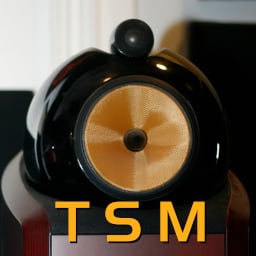Been trying to find a good tablet for productivity and recreation. Something that can be used for programming (Not web), and something that can play DRM content.
Ideally, something under $1000.
I’ve already looked at the Librem 11 and am considering it, but I want to know other (ideally, cheaper) options available.
deleted by creator
idk about op, but if i asked about a good linux tablet, i would mean the hardware not the software
for me a good linux tablet means i can take my favorite linux distro, install it without big hassle and have a good performing computer with all components working afterwards
while good performing can be interpretable
deleted by creator
if the hardware is not working with the linux kernel, its bad hardware
gnome not opening the keyboard when i focus an input, has nothing to do with the hardware
One caution on older Surface Pros: They are generally not serviceable, and when the batteries eventually go, you will have to replace the device. The 9th gen and later may be better. I am dealing with this right now in a 2017/5th gen Surface Pro. While it’s nice hardware (as a user), apparently the battery is glued-in in such a way that you cannot replace it without destroying the tablet. I’m currently looking to replace it with either a Lenovo ThinkPad X12 detachable or a Dell Latitude 7320 detachable, both of which are similar but (purportedly) much more repairable.
I have a Surface Pro 4 (I think from 2015) and the battery life now is awful. I might be able to get an hour or two depending on the performance mode, I usually just plug it in while using it now. If I forget to plug it in between uses, it will definitely be dead the next time I go to use it.
Plus it’s starting to feel pretty slow. I do still have Windows on it, perhaps installing Linux would help make it faster but it sounds like it takes some work to get everything working properly so I haven’t bothered.
That’s about where I am. If I’m doing really light duty stuff (web browsing, no video) I can get maybe an hour. Any more than that, the clock is ticking pretty fast.
deleted by creator
I’ve done several repairs and battery replacements on various tablets, but as an amateur, I won’t touch this one. I’m sure if you crack these things regularly you can get proficient at it, but given the complexity, I’m not sure it’s worth the labor.
imo android and iOS tablets are not even in the same league because they lack tiling WMs. I also think that transparent windows are a pretty important feature although I won’t be surprised if you could find some hacky solution on android. I guess my priorities are different then.
Some Microsoft surface models can run surface-linux pretty well
Surface Go 1 running Fedora for me. It runs perfectly even if booting from a USB to install Linux can be tricky and the Bluetooth is slow to puck up my mouse on startup.
It’s linked by usb-c to a monitor for when I’m home.
I’ve got a SP8 which I’ve been running PopOS on since the start of the year. The cameras don’t work but this isn’t a deal-breaker for me, it runs smoothly and is perfect for my needs as a media consumption device (music, movies, comics) with some browsing. There were some issues I had on installation but nothing that couldn’t be resolved. Many thanks to the Linux surface team!
I threw Ubuntu LTS on an old Surface 3 and it worked without having to use the Surface-linux kernal.
My dads been using it for a year and Gnome works super well with the touchscreen.
deleted by creator
Have an SP4 now, running Nobara KDE, because I’m too lazy to install the surface Linux kernel on a different distro. It’s pretty great. I bought a cheap one, and it has some issues unrelated to Linux. In fact it runs a lot better and the hardware issues are alleviated slightly after removing windows.
Long story short, would highly recommend buying a not borked Surface and slapping Linux on it.Does Nobara have surface kernel built in?!?? This is news to me, might reinstall due to this.
Sure does pal! There’s a non-surface version, but as far as I know it’s the only distro that includes it stock. And on my SP4 it’s been absolutely butter smooth.
Ublue has variants with the surface kernel by default. Really, just use their hacky stuff instead of getting all the errors on your device.
I am sure their gaming focused bazzite variant has a surface version. Ublue fedora is way more secure than Nobara. Fedora doesnt support Apparmor by default, so SELinux will be more secure. There are tons of things wrong with nobara, and the performance increase is really not important (TheLinuxExp tested it and its like 5%)
Fair enough, I hadn’t known about Ublue. Give it a go tonight. That said, running Nobara, I’ve not had any unexpected errors. And it’s not like I actually do anything that puts any of my info to exposure on my SP4. No email, banking, messaging, don’t even log into my Firefox account. I basically use it for retro gaming, reading manga, and not a whole lot else tbh.
Having a device just for fun stuff… is interesting. The threat is not big but it is always possible. And in my honest opinion, after having broken every other distro model, rpm-ostree is just awesome.
Sorry, it sounds like you’re poopooing having something purely for fun? I spent less on it than I would a night out with the wife, and it’s got hardware issues that make it not a great candidate for a daily driver. So it’s a toy. shrugs
That would be a sweet replacement for an iPad. Is there a distro that gives a more tablet experience?
Anything that offers gnome should be touch ready 😇 I’d go for openSuse TW with gnome
Nice, thank you!
Fedoras kernel doesnt run well on surface and to my knowledge phosh is not well maintained
Last phosh release was 3 days ago and it should work with any distro on wayland
It is a smaller project, but good to hear its actively developed!
Bummer. This seemed like a good solution
Try ublue silverblue surface images
Thanks! I don’t currently have a Surface. But this is opening up an interesting alternative to getting another iPad once my current one dies
I was not even able to test onscreen keyboards on KDE as there seems to be no way to force it. didnt try on GNOME. It may be able to work as an ipad replacement, but not always.
I wouldn’t get the Librem 11, I don’t trust purism after the librem 5.
It’s Linux-based hardware, so any OS could be installed easily if PureOS isn’t a good fit for OP. And, unlike the phone, it’s basically a computer, like one of their laptops (which have been fine).
If we are talking about Pinephone, Fairphone, Librem 5, etc. – they all suffer uniquely. Modems drop on all these devices often enough, battery life sucks based on tasks, app support is sundry, screens are left wanting, and more. Phones are hard to make.
I might class Linux-based hardware phones differently from Linux-based hardware tablets.
he’s talking about their (purism/librem) inability to deliver hardware
I thought about buying a Starlite by Starlabs. It looked pretty cool, but I just don’t need a tablet.
Welcome to Lemmy!
I daily drive a Starlite 3 (the older version is a laptop) and am happy with it. Once thought about buying the Starlite 5 (the new convertible tablet) when the keyboard on mine was broken, but then gave up the idea because of how repairable the laptop version is. End up I just bought a replacement keyboard.
It is great if you need a touch screen and don’t have concern about repairing. But if it is just for occasional use, I may go with the Pinetab instead. Never tried one but I guess it will be more fun.
It does look cool, but it’s quite expensive for what it is.
Minisforum just announced their V3 which is a Windows tablet with amazing looking specs. I would wait until people confirm if everything works on Linux, but it’s an option to consider.
Any info on pricing yet? This is one I’d consider too, if it doesn’t cost a fortune.
Yes, looks indeed expensive :-(
I am interested in this as well. I currently have an iPad Pro and while I won’t be upgrading right now, I have been looking in the space for the future. I’d prefer something more powerful than and M1/M2 iPad to even consider switching. I haven’t seen much in the tablet space that is not Apple orAndroid, but while being performant. I saw that Minisforum has announced the V3, but it isn’t out yet. Has an AMD 8840u, 14" 165hz display. Looks promising, but I’d be worried about battery life.
I bought a second hand Surface Pro 5 (2017), running Fedora gnome
I’ve started to write a review because I couldn’t really find one, and most of the comments are overly positive (as it often goes on Linux forums I’ve come to realize). It’s not done yet
But I can summarize it: as a tablet it’s not great but it mostly works. It’s certainly not for someone not ready to troubleshoot, and many problems have no, or no great solutions. Also gnome used with touch controls has a major bug (which, again, nobody ever mentions for some reason. It will be in my review)
As a 2 in 1 with little touch use it could be alright. The pen is quite good if you want to draw or write, even though there’s a small delay. The cover is okay, but you’d be better off with a quality laptop keyboard and big trackpad
I bought it mainly for reading, mostly European format comics (bandes dessinées). The resolution is great for that, and the size is good with a reader that removes white margins
Edit: to give you an idea I bought it for 190€ two months ago, with all accessories, good condition and good battery health (which does not mean battery life is good)
It’s not out yet, but there is a kickstarter from German company Volla, coming in the next few days for a 12" tablet running a Mediatek soc that will be capable of running Ubuntu Touch - for which you can use UT native apps, webapps, some Linux desktop apps via their “Libertine” container, and some Android apps via “Waydroid.” And Volla has an excellent track record of delivering on their product promises - in contrast to Purism.
Have you taken a look at the pinetab? Its probably the most Dev oriented Linux tablet. Librem-11 might be the only Linux native x86 tabket but if you don’t mind flashing a new OS a refurbished/used microsoft surface would be cheap and powerful. (Need the linux-surface kernal for all functionality)
I wouldn’t recommend the Pinetab2 at this time. It isn’t fully functional.
I purchased the Star Labs Starlite and am hyped. It holds long and is x86.
I wanted to have a convertable to also draw which makes it perfect for me and making me write this comment. Maybe its irrelevant to you. Starlabs also has a normal Laptop I think but I have no experience with both.
Currently with my chromebook duet 3 I can’t really code without making it freeze or unable to execute code because its ARM.
Well, I picked up a Lenovo Duet 3i for fairly cheap so I could run FreeCAD on a device in my wood shop. It’s an Intel machine, one of those that the keyboard snaps off of. I’ve got Fedora Gnome on it, and it’s not too bad. The biggest issue I have with it is sometimes it comes out of suspend in portrait mode, and there’s no getting it into landscape mode with the keyboard attached, so you have to detach it, tip it a couple times, and it’s back.
It’s an x86 laptop, software is pretty compatible. You might go for a Yoga rather than the Duet if you’re looking for programming; the tablet flop hinge plus kickstand is a bit more of an afterthought than I’d like for coding.
Check out the “Screen Rotate” gnome extension (by shyzus). It adds a button in the gnome quick settings menu that allows you to disable auto rotate, and has the option to add a button to manually switch between portrait or landscape rotation.
That’s one of the biggest things I hate about Gnome, it aims to be as unfinished and feature barren as it can be while still booting to a desktop, and you’re supposed to install the rest of it from third parties.
If you don’t mind waiting a few months to get it delivered, the StarLite V sounds like it will be a great device (I’m currently waiting for mine).
deleted by creator
That thing looks like an MS surface.
deleted by creator
I have a Surface Pro 9 and it runs like a charm. I would recommend it even if it is a little pricey
I’ve been pretty happy with my Pixel Tablet running GrapheneOS. I don’t know everything you’re hoping to do, so maybe Android won’t work for you. However, I’ve been using Plex, Newpipe, Termux, Roon, and other apps, and it’s working well for me.
The stand still works as a speaker when connected as well, which is nice.
I think they’re looking for a gnu/linux tablet and not linux/android tablet
Isn’t it GNU/Linux/Android?













